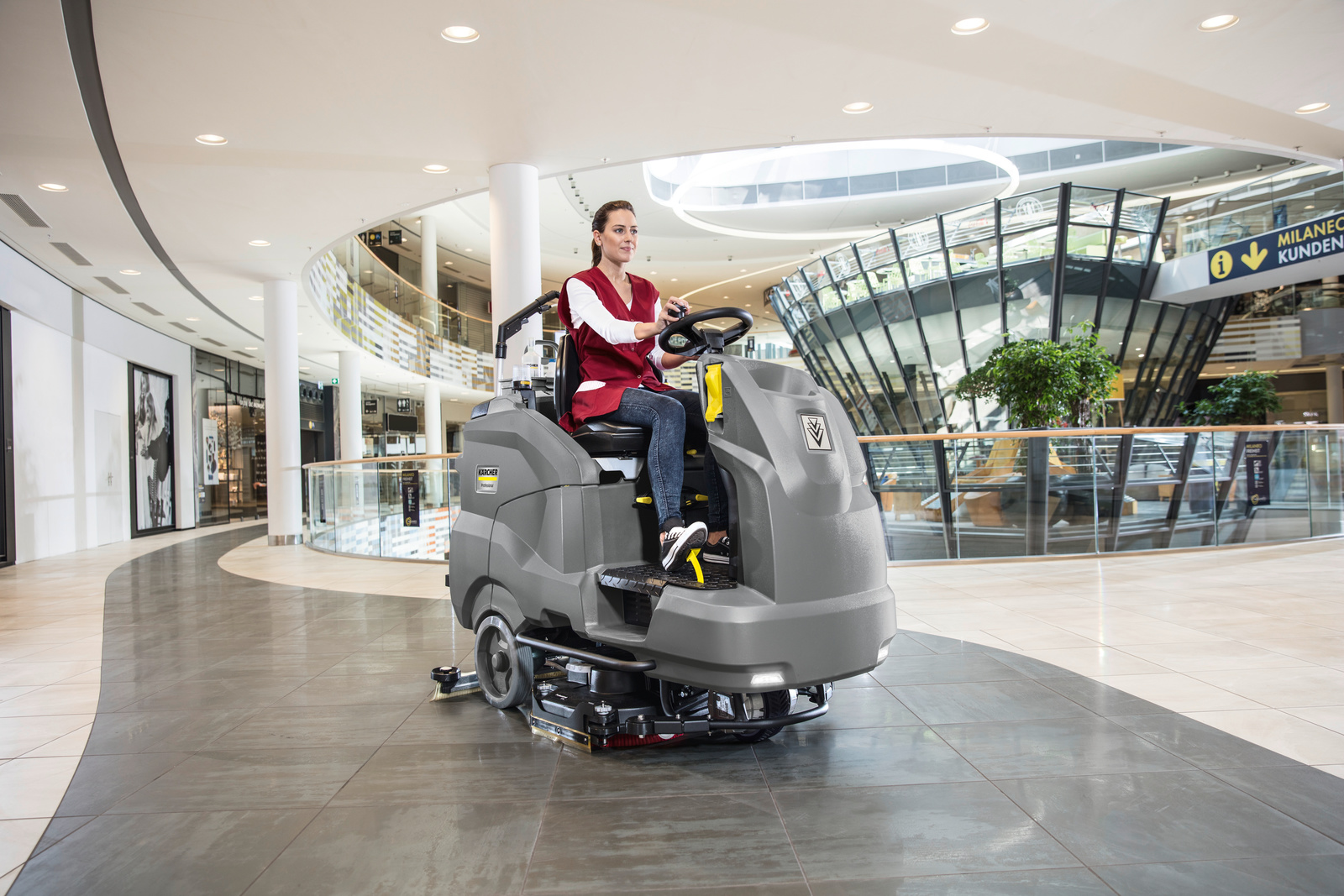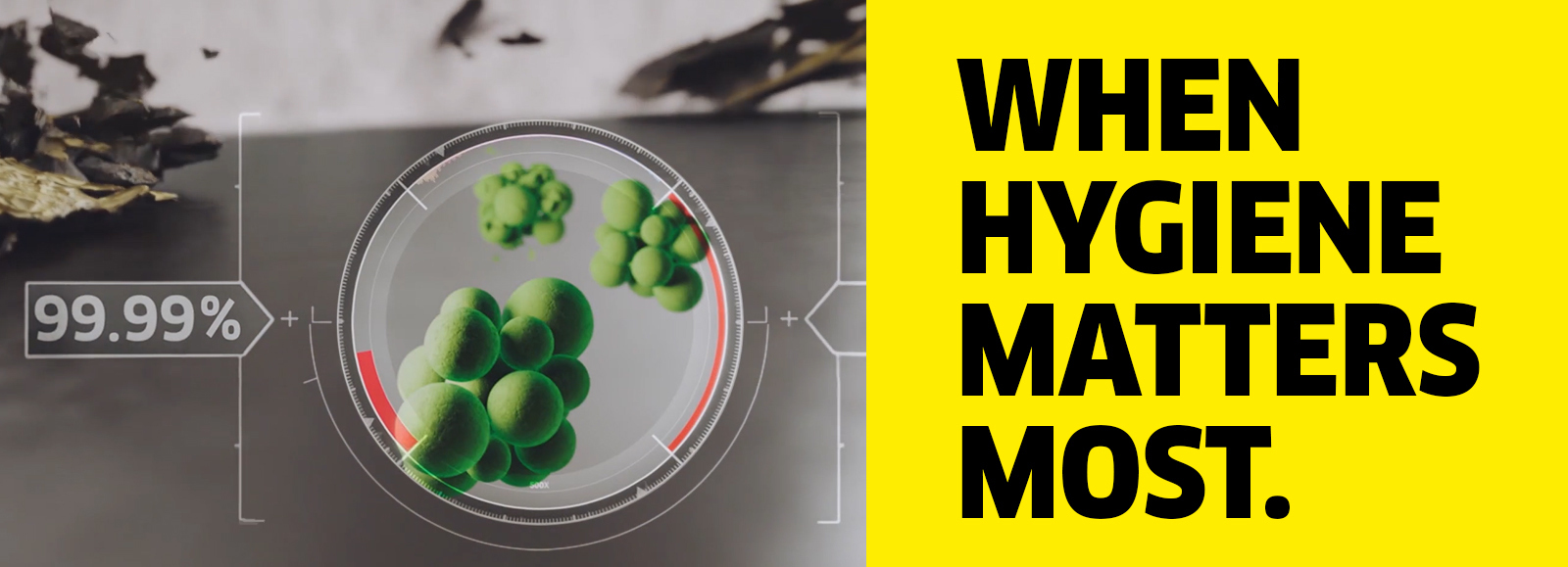Floor cleaning: Advantages of mechanical cleaning with scrubbing machines
For wet cleaning of hard and resilient floor coverings, scrubbing machines are used in addition to manual cleaning equipment. The machines can wet scrub in one step and immediately absorb the dirt liquor. This way, work is carried out both hygienically and efficiently.
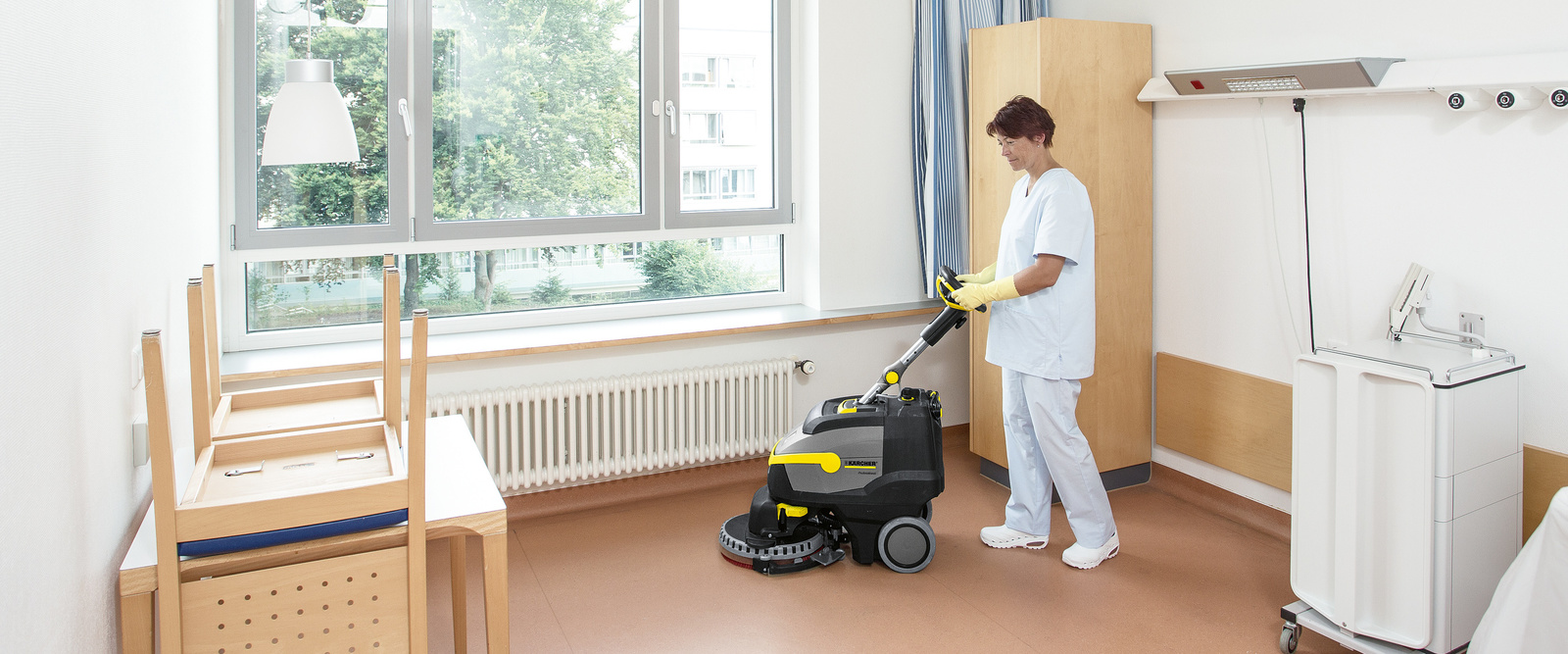
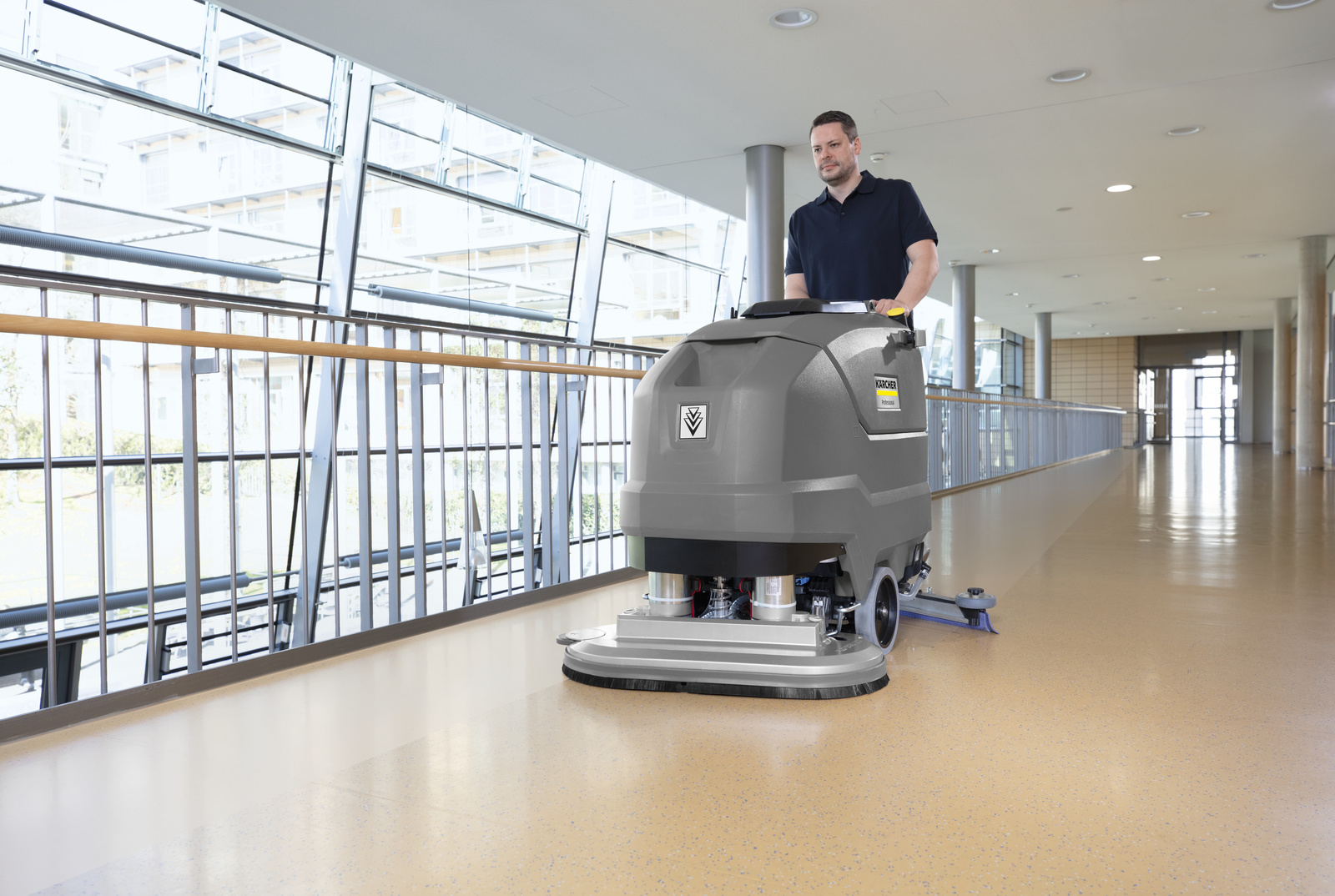
Advantages of mechanical cleaning
The advantage of mechanical cleaning over manual cleaning is that germs - for example by absorbing the dirt water - are permanently removed and cannot accumulate in a manual cleaning textile. This minimizes the risk of recontamination.
The risk of contamination via the hands is also reduced by contact-free cleaning. The use of cleaning machines also increases efficiency: Thanks to the higher area output, a larger area can be cleaned in a shorter time.
A further advantage: Detergent can be added precisely in the correct quantity thanks to dosing systems.
In addition, scrubber driers apply a much higher contact pressure to the surface to be cleaned. This also increases the cleaning performance compared to a mop.
Use of cleaning agents - acidic or alkaline?
It is recommended to change between acidic and alkaline foam cleaning products, so that microorganisms cannot adapt and do not develop resistances. The same applies to disinfectants.
In addition, acids counteract the build-up of inorganic deposits such as lime. Here an alkaline cleaning agent is not sufficient. Organic soiling is dissolved well by alkaline cleaning agents. This is important, because deposits are particularly good adhesion bases for bacteria and viruses.
When using acidic cleaning agents, please note that tile joints may have to be watered beforehand. This prevents them from absorbing the acid and being damaged.
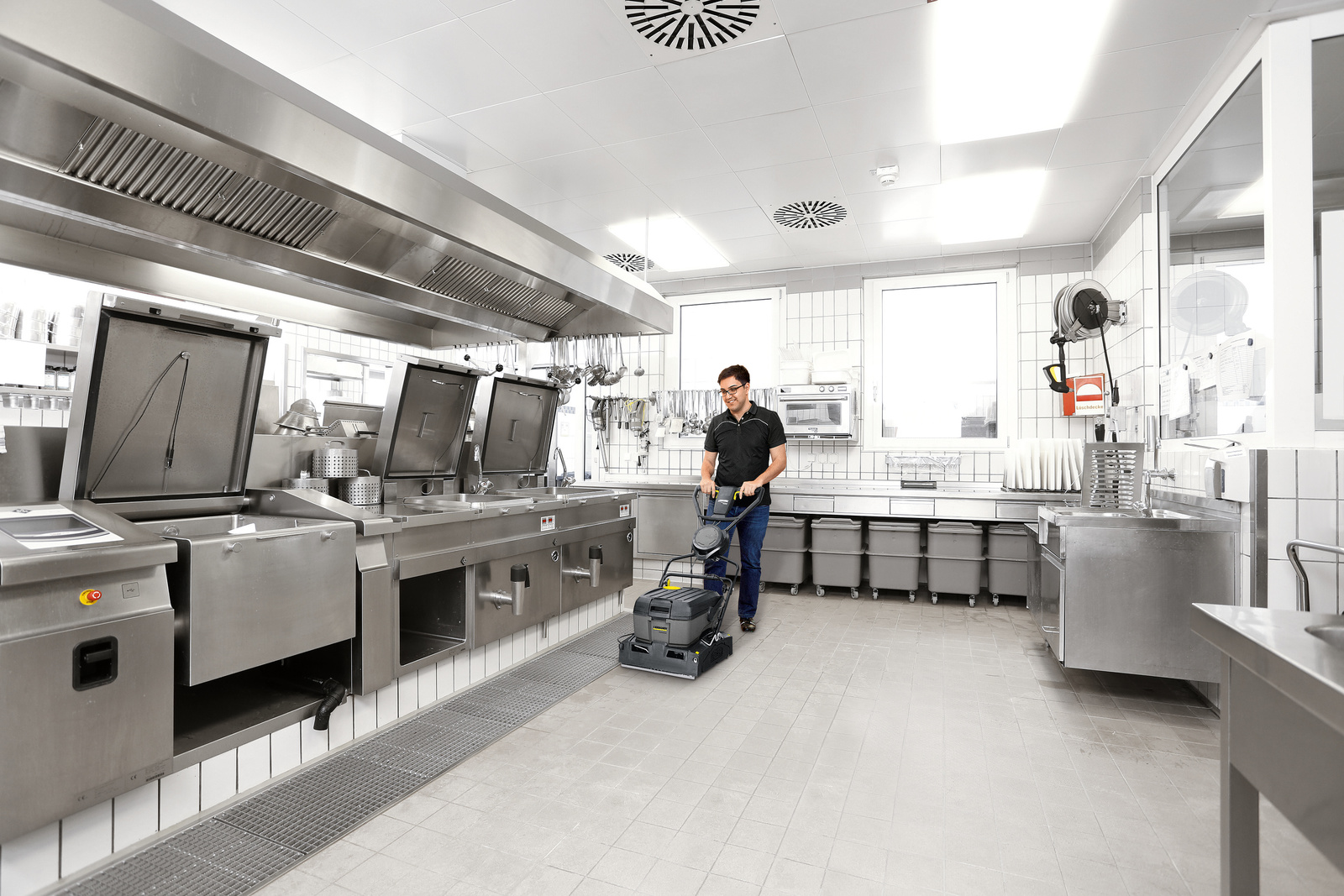
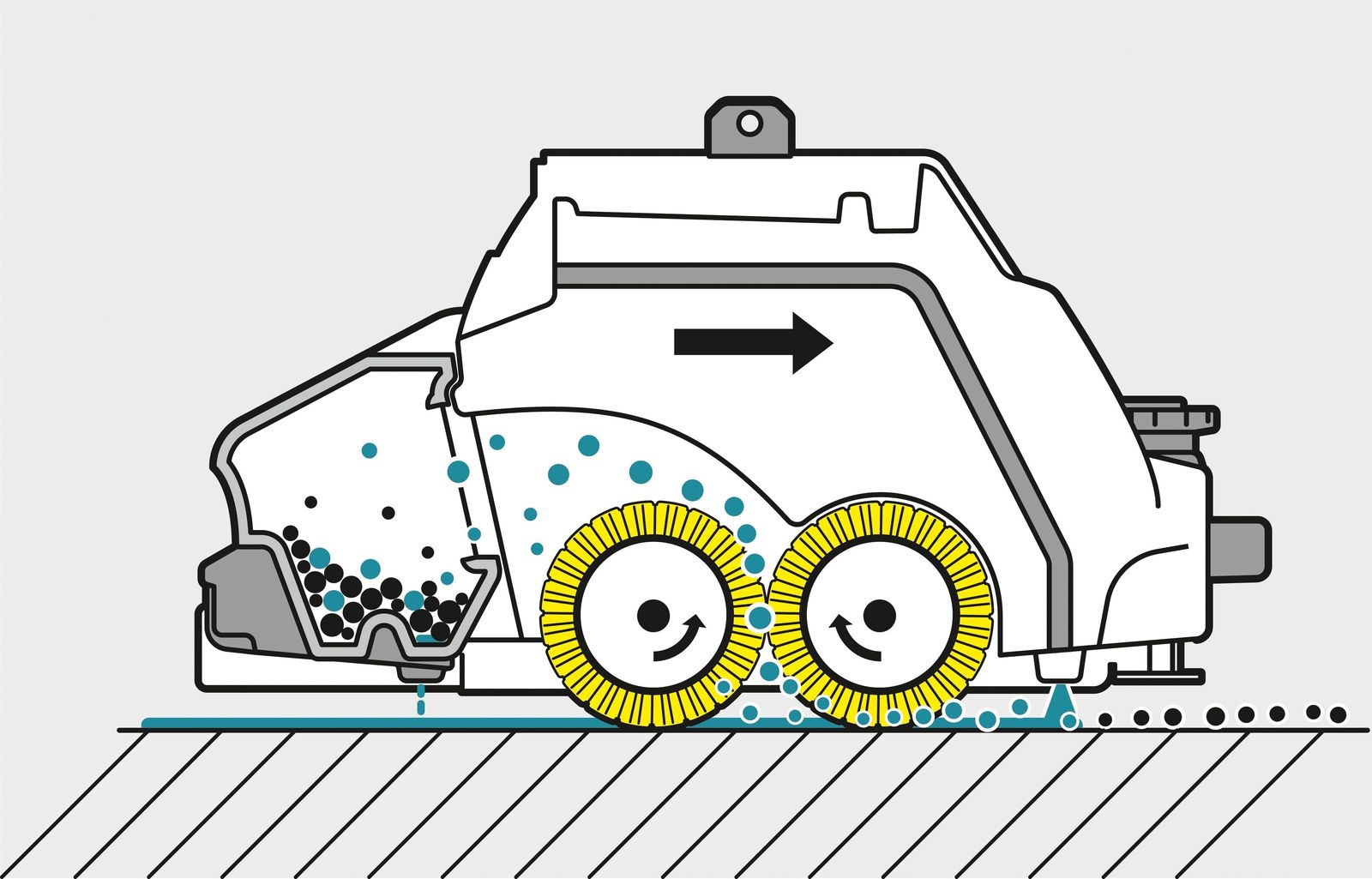
Special challenge: structured floor coverings
Textured floor coverings are more difficult to clean with manual cleaning systems such as wide wiper racks with mop covers. The problem is that dirt and detergent/care product residues can be wiped off by the structure. On the one hand, these residues look unattractive and on the other hand they provide a breeding ground for bacteria.
This problem can be avoided by using scrubbing machines with roller brush technology, as these use soft brushes to reach into the structure and loosen the dirt that is then being vacuumed off. Another advantage of roller brushes is that even coarser dirt particles are swept up and the step of pre-sweeping is saved.
Cleaning and disinfection according to HACCP (Hazard Analysis Critical Control Point)
In particularly hygiene-sensitive areas such as hospitals or kitchens, the premises and existing equipment must be kept clean by careful cleaning and, if necessary, disinfection. Since different areas and devices have different cleaning intervals, a cleaning plan must be designed and visibly hung up in the respective area that is to be cleaned. This plan has to show in detail:
- what (equipment, surfaces, floors),
- when (after use, daily, weekly),
- with what (detergent and dosage)
- and by whom (responsible employee)
it is to be cleaned.
Completed work must be precisely recorded and documented by signature in a comprehensible way to enable controlling. It should be noted that cleaning and disinfection are two different processes. Cleaning aims to remove contamination, i.e. any undesirable substance including product residue, microorganisms, and detergent and disinfectant residue. Thorough cleaning has been proven to remove over 90% of microorganisms and germs from surfaces.
Disinfection involves chemical and physical processes to kill microorganisms to a level that is neither harmful to health nor impairs the quality of food.
